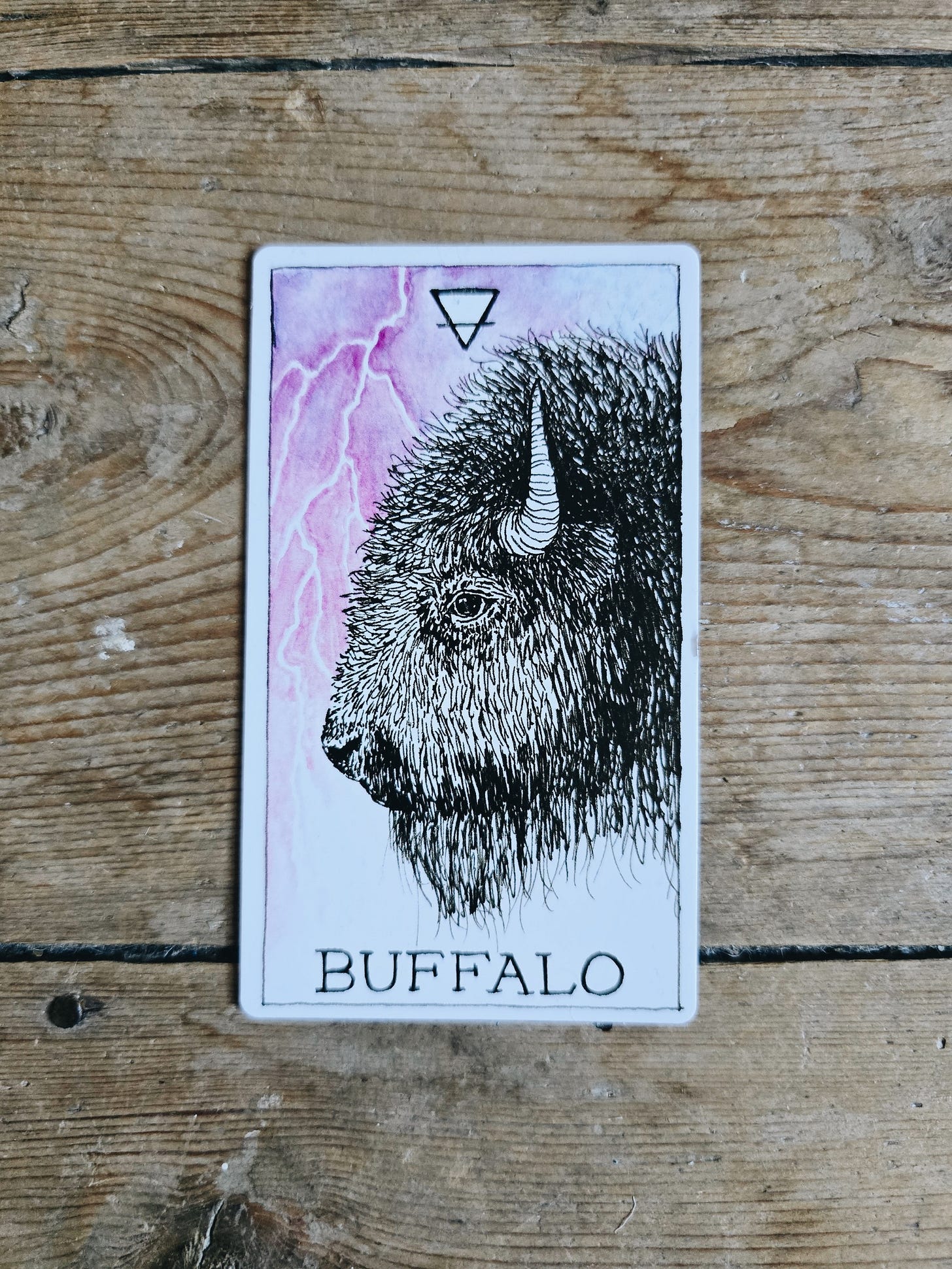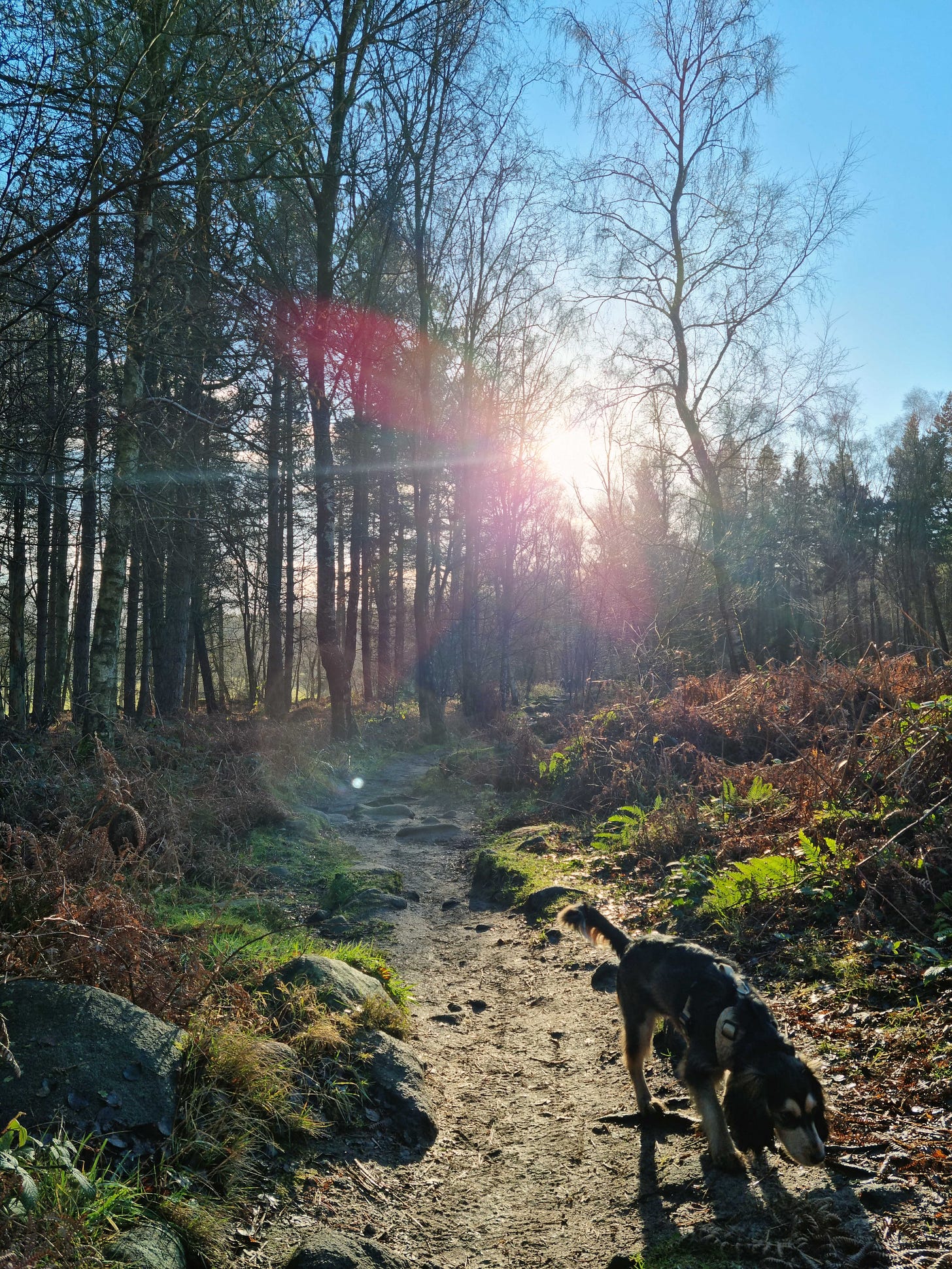Weathering Book Slow Read Week #3
C2 A Big Enough Container: permission to say and feel big things
It is probably unsurprising that no one ever wants to talk to me about this chapter. It is, after all, about loss at its heart, and we generally don’t like talking about that full stop. Which is weird, because it’s the only certain thing, and life probably only feels as sweet and poignant and frustrating as it does, because we know it can’t last forever. Still, we turn a blind eye and maybe this is an evolutionary adaptation designed to keep us blissfully ignorant of a fact that would otherwise distress us into a perpetual depression.
Welcome to week 3 everyone! 😉
My suggestion is that you definitely read the chapter before reading this week’s notes because I think this chapter is best understood in its entirety where we can see the ground it covers and feel into the big themes without getting bogged down in specifics (unless you want to, in which case let’s go there in the comments). If you haven’t done that yet then hit pause and come back. I’ll keep my notes shorter this week, because we have less to do, but bigger things to think about. And perhaps you can design your own doing in response to the questions, and let me know what you get up to? I would love to shimmy you in this direction as you find your own way outside with Weathering as your cheer-leader.
Let’s say big things
“People that are feeling are a risk” this is one of those radical statements again that I like to pepper throughout the book, sliding them just out of view so as not to be troublesome, but nevertheless exposing my leftist, anti-capitalist stance in which I encourage you to feel things, reject institutions, say no to anxiety-inducing consumption, take the time you need and so forth. I lay out my stall early: we should be doing therapy differently (whether or not it is outdoors). I try not to use the word should often, but this is one hill I am prepared to die on. Who ever finds all the radical statements first gets a signed copy of the hardback, which will soon be like finding a unicorn. Deal?
Another tricky question is “can nature cure us?”, which has pride of place at the top of page 71. There are a lot of books on this these days. Heck, I wrote two of them. But writing as a therapist I am in touch with the complexity of the statement, and the omissions that might be inherent in it.
1. What is your instinct here, can nature cure us? Have you experience this to be true? Partially true? Not true at all? What are you convictions and doubts?
2. What is your personal conception of the word ‘cure’? Perhaps you live with things that you know through experience can’t be cured? How does this feel? Alternatively, perhaps you have experienced miracles, peak moments, epiphanies while outside? Does it matter whether we talk in a language of cure or not?
3. How do you relate to Paul in this chapter, and what he’s going through, the way we are working in a body-based way outdoors to ‘bring him back to life’? Can you find yourself in his experience of grief or stuckness?
Remember to feel is to be a risk to the systems that bind us. Let’s be risky creatures! And if you want to use the comment section to share your cure/uncured stories of nature relationship then please do.
Big Animal Work
This was an idea for a concept that came to me very early in the writing of Weathering as I reflected on my therapeutic work outside, especially grief work. I started my therapeutic career working with grief and loss in a hospice setting, which itself felt like a natural progression for my background working with The Samaritans, but so often grief and its adjacent emotions (for any number of different losses in fact) is a stealth part of therapy even if it’s not overt. It’s tell-tale sign, that heavy, barely-beating heart that drags itself forward underneath the noise of daily life.
4. How do you feel about the concept of grief and loss as Big Animal Work? Have you experienced it that way? Beyond what I have already elaborated, what else do you think I mean by this? When has loss made a big animal of you? What did life look like when you were going through this? Was the terrain clear?
Of course, it is not only grief that is Big Animal Work. I would say, that this is living to some extent. And other times it might be more like Small Animal Doing Big Work, or some alternative conception. Spend some time with these questions. Feel the weight of them in your paws and under your hooves. Take them outside. Dig them in.
5. When you think about your life, or your work, or whatever you are living at the moment – not necessarily grief - which animal, plant or other type of being do you most identify with? How does making this association help you?
I am sure that some of you readers have also been to my Animal Movement Classes, so perhaps you understand how deeply I value the affiliations we build beyond the human ‘mirror’. Indeed, one of the central tenets of this book is how to think and feel more rock, in order to come at our lives slightly differently. How we can imagine and dream into other shape-shifting forms is a vital part of how we attune empathically beyond our own species. We see ourselves in them, we see them in us. We recognise shared plight and shared joy. We create space for something to emerge between us.
When it comes to Big Animal Work in my own personal life, I like to surround myself with the animals that guide me. Rocks too, of course. If you have an answer for Q5 then my invitation is to incubate and cherish this relationship. Learn about the animal and their real lives. How do they live? How do they survive? How do they adapt? Surround yourself with their imagery. Go and seek them if you can. Donate to a charity invested in their protection. It is amazing what more we learn about our instinctive affinities when we root the intuition in knowledge and research.

What holds you? How is that for you?
Let’s end this chapter by zooming out onto the idea of terrains, landscapes, and containment charted through this chapter. Weathering is nothing if not a vast extended metaphor, replete with sub-metaphors. Terrains, landscapes and containers are of course real things we have named, but they are also rich metaphors for our inner worlds and how we map and hold our multiplicities. Oh, the many ways that I work with maps! I could tell you a lot about that. But I would rather you meditate on this yourself.
As I write this though, I am in touch with a desire to look in the opposite direction (after all, this is a companion guide and not a replica of the book) and I find myself dwelling on what it means to be uncontained? Are there scenarios where we might relish a lack or release of containment? What happens if we knowingly let the sturdy container shatter? Do we over-prioritize being contained? It feels important to hold in mind that when it comes to weathering our lives sometimes being overly concerned with staying sane and rational, can have its own erosive consequences. There’s a time for spontaneity and the bursting forth of uncontained instinct. Or is there? I don’t know, you tell me! Let’s discuss!
6. Taking the idea of containment in its entirety, what is the ideal container or vessel for you? What do you have around you that symbolises a holding quality that makes you feel good and safe?
7. What sort of landscapes do you find most containing?
8. What would ‘stretching the container’ mean to you? Sometimes we need to grow our pot, while still trusting in the way it can hold us together.
Here are some containers I love. U-shaped valleys, tidal rock pools, Kilner jars, wonky ceramic pots, giant pasta bowls, the inside of my van, an absorbing novel set in Japan, big sky with the edges pulled in tight like a sheet.
On location:

EXTRA for Paid Supporters this week:
1) A reading from my first book GROUNDED on the theme of spaciousness
2) Five cards to inspire Big Animal Work




